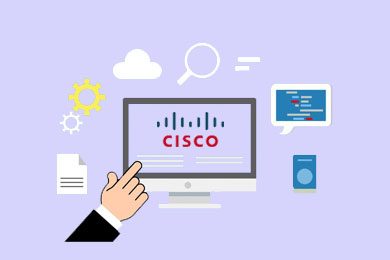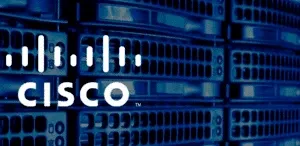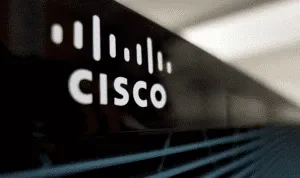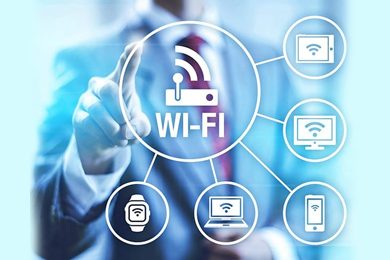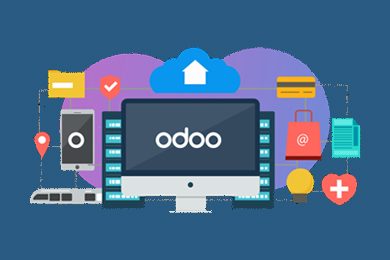This plan includes
- Limited free courses access
- Play & Pause Course Videos
- Video Recorded Lectures
- Learn on Mobile/PC/Tablet
- Quizzes and Real Projects
- Lifetime Course Certificate
- Email & Chat Support
What you'll learn?
- Get what you need to pass the up-to-date Cisco CCNA 200-301 exam
- Explore how routing and switching technologies work in real world environments
- Hands-on Cisco CCNA configuration and troubleshooting experience through practice labs
- This course is for anyone who wants to attain the Cisco CCNA 200-301 certification
- Learn topics such has Wi-Fi, Network Automation and Network Security
- Learn how Kali Linux can be used to hack networks
- Learn how to configure Cisco Routers and Switches
Course Overview
Full lab exercises are included so you'll get the hands-on practical skills you need to work on real world networks, and it's the only CCNA course online. It gives you a full understanding of all the concepts and topics you need to earn the most in-demand networking certification today by passing the Cisco CCNA 200-301 exam. This course helps you prepare for the newest CCNA 200-301 exam. This is your first step towards attaining your Cisco certifications.
Develop a deep understanding of Cisco’s features and functions
Walk through complete and easy to understand explanations of each technology area covered in the exam
Follow simple step by step instructions to build your own fully featured lab on your laptop.
Gain hands on configuration and troubleshooting experience through comprehensive lab exercises
Learn how networking really works through real world examples throughout the course
Build the skills and confidence to crush the CCNA 200-301 exam
Gain demonstrable knowledge and practical experience to supercharge your networking career
Large amount of practical video content with detailed explanations of CCNA topics in GNS3 and Cisco Packet Tracer demonstrations
Who this course is for:
Anyone who wants to pass the Cisco CCNA 200-301 exam and start or improve a career in networking.
IT helpdesk engineers who are interested in careers such as network engineers, network administrators, systems administrators, or solution architects. This course can help start your career journey into these fields.
Network engineers who are not Cisco CCNA certified or who have an expired certification. Even if you’re an experienced professional, you’ll fill gaps in your knowledge and master concepts like IPv6 and OSPF in this course.
IT professionals who want a comprehensive resource on Cisco networking theory, configuration and troubleshooting.
Six main sections of the training are :
1- Network Fundamentals
2- Routing And Switching Essentials
3- Scaling Networks
4- Connecting Networks
5- Security Fundamentals
6- Network Automation and Programmability
Pre-requisites
- This course is for you if you are new to networking.
- Basic understanding of computers (connect to the Internet)
- You’ll need basic knowledge of how to operate a computer
- Absolute beginners to networking are welcome.
Target Audience
- Absolute beginners to networking are welcome.
- This course is for you if you are new to networking and Cisco.
- This course is based for CCNP Enterprise and CCNP Security
Curriculum 124 Lectures 33:15:38
Section 1 : Section 1
- Lecture 2 :
- Download and make ready software for EVE-NG.
- Lecture 3 :
- Configure, Install & Verify EVE-NG Simulator.
- Lecture 4 :
- Introduction to CCNA, Network and Networking.
- Lecture 5 :
- Explain Function of Network Component Router.
- Lecture 6 :
- Explain Function of Network Component Switch.
- Lecture 7 :
- Explain Function of Network Component Firewalls.
- Lecture 8 :
- Explain Function of Network Component IPS & IDS.
- Lecture 9 :
- Explain Function of Network Component Wireless AP.
- Lecture 10 :
- Explain Function of Network Component Wireless WLC.
Section 2 : Section 2
- Lecture 1 :
- Explain Function of Network Component Cisco DNA.
- Lecture 2 :
- Explain Function of Network Component Endpoints.
- Lecture 3 :
- Explain Function of Network Component Servers.
- Lecture 4 :
- Intro & Concept of 2 Teir and 3 Teir Architectures.
- Lecture 5 :
- Introduction and Concept of On-Premises and Cloud.
- Lecture 6 :
- Introduction and Concept of Spine-Leaf Architecture.
- Lecture 7 :
- Introduction and Concept of Small office/home office.
- Lecture 8 :
- Introduction and Concept of Wide Area Network (WAN).
- Lecture 9 :
- Compare Physical Interface & Different Cabling Types.
- Lecture 10 :
- Introduction to Single-Mode Fiber & Multimode Fiber.
Section 3 : Section 3
- Lecture 1 :
- Connections Ethernet shared media and point-to-point.
- Lecture 2 :
- Introduction and Concepts of PoE-Power Over Ethernet.
- Lecture 3 :
- Introduction, Configure and Verify IPv4 Addressing.
- Lecture 4 :
- Describe the need for Private IPv4 Addressing.
- Lecture 5 :
- Verify IP parameters for Client OS (Windows,Linux).
- Lecture 6 :
- Identify Interface and Cable Issues Duplex & Speed.
- Lecture 7 :
- Introduction, Concepts and Compare TCP to UDP.
- Lecture 8 :
- Introduction and Concepts of IPV4 Subnetting.
- Lecture 9 :
- Introduction and Concepts of IPV4 Subnetting Part-2
- Lecture 10 :
- Explain Virtualization Fundamentals (Virtual Machines).
Section 4 : Section 4
- Lecture 1 :
- Introduction, Theory and Concept of Cisco Switches.
- Lecture 2 :
- Media Access Control Address (MAC) Learning and Aging.
- Lecture 3 :
- Media Access Control Address (MAC) Address Table.
- Lecture 4 :
- Configure and Verify Virtual Local Area Network (VLANs).
- Lecture 5 :
- Introduction and Concept of Access ports data and voice.
- Lecture 6 :
- Introduction and Concept of Default VLAN in Cisco Switch.
- Lecture 7 :
- Configure and Verify Interswitch Connectivity 802.1Q.
- Lecture 8 :
- Configure and verify interswitch connectivity Trunk Ports.
- Lecture 9 :
- Configure and verify interswitch connectivity Native VLAN.
- Lecture 10 :
- Introduction and Concept of EtherChannel or Port Channel.
Section 5 : Section 5
- Lecture 1 :
- Configure & Verify Link Aggregation Control Protocol Switches.
- Lecture 2 :
- Configure & Verify Linak Aggregation Control Protocol Switches.
- Lecture 3 :
- Configure and Verify Port Aggregation Protocol (PAgP).
- Lecture 4 :
- Configure and Verify EtherChannel Static or Manual on Mode.
- Lecture 5 :
- Configure and Verify Layer 3 EtherChannel or Port Channel.
- Lecture 6 :
- Configure and Verify EtherChannel Load-Balancing Lab.
- Lecture 7 :
- Troubleshooting EtherChannel Bundles or Port Channel Lab.
- Lecture 8 :
- Introduction to EtherChannel Misconfiguration Guard Command.
- Lecture 9 :
- Introduction and Concept of Spanning Tree Protocols (STP).
- Lecture 10 :
- Introduction and Concept of Spanning Tree Protocols PVST+.
Section 6 : Section 6
- Lecture 1 :
- Introduction and Concept of Spanning Tree Protocols RPVST+.
- Lecture 2 :
- STP Operations Priority,Root Bridge,Root Port,Port States.
- Lecture 3 :
- Diffrence Between Spanning Tree Protocols (STP) and RSTP.
- Lecture 4 :
- Introduction and Concept of Bridge Protocol Data Unit BPDU.
- Lecture 5 :
- STP Show Spanning-tree VLAN Command output explained.
- Lecture 6 :
- Introduction to Spanning Tree Protocols (STP) Port Role.
- Lecture 7 :
- Introduction to Spanning Tree Protocols (STP) Port States.
- Lecture 8 :
- Configure and Verify Spanning Tree Protocols (STP, RSTP).
- Lecture 9 :
- Introduction and Concept of Routed and Routing Protocols.
- Lecture 10 :
- Introduction, Configure and verify IPv4 Default Route.
Section 7 : Section 7
- Lecture 1 :
- Introduction, Configure and verify IPv4 Network Route.
- Lecture 2 :
- Introduction, Configure and verify IPv4 Host Route.
- Lecture 3 :
- Introduction, Configure and verify IPv4 Floating static.
- Lecture 4 :
- Introduction and Concept of Components of Routing Table.
- Lecture 5 :
- Configure and Verify The Longest Match Routing Rule.
- Lecture 6 :
- Introduction and Concept of Administrative Distance AD.
- Lecture 7 :
- Introduction and Concept of Routing Protocol Metric.
- Lecture 8 :
- Configure and Verify IP Routing Packet Flow in the Network.
- Lecture 9 :
- Introduction and Concept of Open Shortest Path First OSPF.
- Lecture 10 :
- Introduction and Concept of OSPF Protocol Terminologies.
Section 8 : Section 8
- Lecture 1 :
- Open Shortest Path First Routing Protocol Basic Configuration.
- Lecture 2 :
- Open Shortest Path First Routing Protocol Three Tables.
- Lecture 3 :
- OSPF Dynamic Routing Protocol Neighbor Adjacencies States.
- Lecture 4 :
- Open Shortest Path First (OSPF) Routing Protocol Metric.
- Lecture 5 :
- Open Shortest Path First (OSPF) Routing Protocol Packet Types.
- Lecture 6 :
- Open Shortest Path First (OSPF) Routing Protocol Router ID.
- Lecture 7 :
- Open Shortest Path First (OSPF) Routing Protocol Router Types.
- Lecture 8 :
- Open Shortest Path First (OSPF) Routing Protocol Routes Types.
- Lecture 9 :
- Open Shortest Path First Designated & Backup Designated Router.
- Lecture 10 :
- Open Shortest Path First (OSPF) Equal-Cost Load Balancing.
Section 9 : Section 9
- Lecture 1 :
- Open Shortest Path First (OSPF) Summarization in ABR & ASBR.
- Lecture 2 :
- Open Shortest Path First (OSPF) Path Preference or Selection.
- Lecture 3 :
- Open Shortest Path First (OSPF) Hello Interval & Dead Interval.
- Lecture 4 :
- Open Shortest Path First (OSPF) Filtering Using Distribute List.
- Lecture 5 :
- Open Shortest Path First (OSPF) Different Network Types.
- Lecture 6 :
- Describe the purpose of first hop redundancy protocol FHRP.
- Lecture 7 :
- Introduction and Concept of Network Address Translation.
- Lecture 8 :
- Configure and Verify Network Address Translation & PAT.
- Lecture 9 :
- Introduction and Concept of Network Time Protocol (NTP).
- Lecture 10 :
- Configure and Verify Network Time Protocol and Security.
Section 10 : Section 10
- Lecture 1 :
- Explain the role of Dynamic Host Configuration Protocol DHCP.
- Lecture 2 :
- Configure and verify Dynamic Host Configuration Protocol Server.
- Lecture 3 :
- Configure and verify Dynamic Host Configuration Protocol Relay.
- Lecture 4 :
- Explain the role of Domain Name System DNS within the network.
- Lecture 5 :
- Explain the function of SNMP in the network operations.
- Lecture 6 :
- Describe use of Syslog Features Including Facilities & Levels.
- Lecture 7 :
- Introduction, Theory and Concept of Quality of Service QoS.
- Lecture 8 :
- Configure network devices for remote access using SSH.
- Lecture 9 :
- Describe Capabilities and Function of TFTP/FTP in the network.
- Lecture 10 :
- Define Key Security Concepts Threats, Vulnerabilities etc.
Section 11 : Section 11
- Lecture 1 :
- Configure Device Access Control Using Local Passwords.
- Lecture 2 :
- Security Password Policies Element Multifactor Authentication.
- Lecture 3 :
- Describe and Concept of Remote Access and Site-to-Site VPNs.
- Lecture 4 :
- Introduction, Theory and Concept of Access Control List ACL.
- Lecture 5 :
- Configure and Verify Standard Access Control List ACL Lab.
- Lecture 6 :
- Configure and Verify Extended Access Control List ACL Lab.
- Lecture 7 :
- Configure and Verify Named Access Control List ACL Lab.
- Lecture 8 :
- Configure & Verify Time-Based Access Control List ACL Lab.
- Lecture 9 :
- Configure & Verify Infrastructure Access Control List Lab.
- Lecture 10 :
- Configure & Verify Layer 2 Security Features DHCP snooping.
Section 12 : Section 12
- Lecture 1 :
- Configure & Verify Layer 2 Security Features ARP Inspection.
- Lecture 2 :
- Configure & Verify Layer 2 Security Features Port Security.
- Lecture 3 :
- Differentiate authentication, authorization, and accounting.
- Lecture 4 :
- Describe Wireless Security Protocols (WPA, WPA2, and WPA3).
- Lecture 5 :
- Configure and Verify WLAN using WPA2 PSK using the GUI.
- Lecture 6 :
- Explain How Automation Impacts Network Management.
- Lecture 7 :
- Introduction and Concept of Software Defined Networking.
- Lecture 8 :
- Introduction to North Bound API and South Bound API.
- Lecture 9 :
- Introduction to Application Programming Interface API.
- Lecture 10 :
- Recognize Capabilities of Configuration management mechanisms.
Section 13 : Section 13
- Lecture 1 :
- Interpret JSON (JavaScript Object Notation) Encoded Data.
- Lecture 2 :
- Introduction to Layer 2 Discovery Protocols CDP and LLDP.
- Lecture 3 :
- Configure and Verify Layer 2 Discovery Protocols CDP Lab.
- Lecture 4 :
- Configure and Verify Layer 2 Discovery Protocols LLDP Lab.
Our learners work at
Frequently Asked Questions
How do i access the course after purchase?
It's simple. When you sign up, you'll immediately have unlimited viewing of thousands of expert courses, paths to guide your learning, tools to measure your skills and hands-on resources like exercise files. There’s no limit on what you can learn and you can cancel at any time.Are these video based online self-learning courses?
Yes. All of the courses comes with online video based lectures created by certified instructors. Instructors have crafted these courses with a blend of high quality interactive videos, lectures, quizzes & real world projects to give you an indepth knowledge about the topic.Can i play & pause the course as per my convenience?
Yes absolutely & thats one of the advantage of self-paced courses. You can anytime pause or resume the course & come back & forth from one lecture to another lecture, play the videos mulitple times & so on.How do i contact the instructor for any doubts or questions?
Most of these courses have general questions & answers already covered within the course lectures. However, if you need any further help from the instructor, you can use the inbuilt Chat with Instructor option to send a message to an instructor & they will reply you within 24 hours. You can ask as many questions as you want.Do i need a pc to access the course or can i do it on mobile & tablet as well?
Brilliant question? Isn't it? You can access the courses on any device like PC, Mobile, Tablet & even on a smart tv. For mobile & a tablet you can download the Learnfly android or an iOS app. If mobile app is not available in your country, you can access the course directly by visting our website, its fully mobile friendly.Do i get any certificate for the courses?
Yes. Once you complete any course on our platform along with provided assessments by the instructor, you will be eligble to get certificate of course completion.
For how long can i access my course on the platform?
You require an active subscription to access courses on our platform. If your subscription is active, you can access any course on our platform with no restrictions.Is there any free trial?
Currently, we do not offer any free trial.Can i cancel anytime?
Yes, you can cancel your subscription at any time. Your subscription will auto-renew until you cancel, but why would you want to?
Instructor

11721 Course Views
19 Courses



 Tech & IT
Tech & IT
 Business
Business
 Coding & Developer
Coding & Developer
 Finance & Accounting
Finance & Accounting
 Academics
Academics
 Office Applications
Office Applications
 Art & Design
Art & Design
 Marketing
Marketing
 Health & Wellness
Health & Wellness
 Sounds & Music
Sounds & Music
 Lifestyle
Lifestyle
 Photography
Photography






.jpg?crop=smart&width=600&height=400)
.jpg?crop=smart&width=600&height=400)



.jpg?crop=smart&width=600&height=400)



